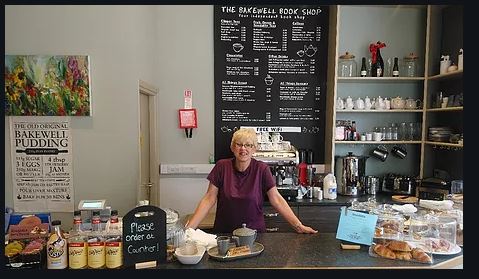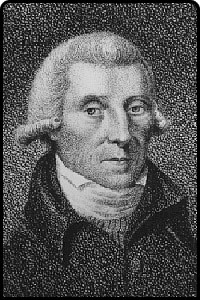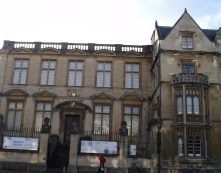Book Review: Endeavour – The Ship and the Attitude that Changed the World
February 9th, 2020share this

At the age of 15, my sons were fairly obsessed with sportand under pressure to work towards impending exams. It is hard to imagine sending them to theother side of the world by sea with the East India Company at that age, as wasthe case with young William Nicholson. It is hard to imagine, the seafaring bustle of the Thames when shipswere built of wood, sails were sewn by hand and sailors could be seen hangingfrom the rigging as he boarded his first Indiaman in 1768.
Nowadays there are daily flights from London to Guangzhou (Cantonto Nicholson) with a journey time of less than ten hours. In 1768, the journeywould take several months and (not being any sort of sailor) it is hard toimagine the life on board – the routines, the food, the highs and lows – that wouldhave been Nicholson’s life.
Fortunately, under my Christmas tree this year was a copy ofPeter Moore’s Endeavour – The Ship and the Attitude that Changed the World, abook tracing the history of this bark’s life from before it was launched in1764 through its early life in the coal trade between London and the NorthEast, along its famous journey to the South Seas to observe the Transit ofVenus with Captain Cook and Joseph Banks, and finally her role in one of thegreatest invasion fleets in British History.
Moore paints such a vivid picture of the bark and the charactersaboard, the environment in port or at sea, and the political and economicsetting – that it was a very enjoyable read and easy to imagine Nicholsonpassing the Endeavour in the Thames or the Channel as they set sail in the sameyear.
It was charming to meet the young Sir Joseph Banks when hewas full of fun and enthusiasm, eagerly collecting thousands of botanical specimens- for Nicholson’s encounters with Banks two decades later had left me with theimpression of a grand but arrogant and entitled character.
As a young man crossing the equator for the first time, andwithout the means to pay a fine to avoid the experience, Nicholson will havehad to partake in the traditional dunking ceremony which was described in greatdetail when Endeavour crossed in October.
While Cook’s South Sea discoveries have been told manytimes, Moore then traces the history of this vessel further on through a periodof sad neglect into a new role during the revolutionary years as part of the Navalforce which amassed in New York Harbour in 1776.
I was quite carried along by the tale of this doughtyworkhorse, and really enjoyed Moore’s telling of the international political backdrop.
You don’t need to be a historian of sailing to enjoy this historyof an enlightenment hero of the seas.
#28
Bakewell bucks the trend in independent bookshops
June 12th, 2019share this

Can there be a more perfect place for a day out than Bakewell? Not only is it in the centre of the most fabulous countryside with numerous walks and access to superb fly-fishing, but it is home to two, YES TWO! independent bookshops.
I cannot pass an antiquarian bookshop without popping in to see if they have anything by Nicholson (or Godwin or Holcroft). Invariably, the proprietor has not heard of William Nicholson (1753-1815) and thinks I mean the artist (1872 – 1949), and invariably there is nothing on the shelf for me.
But this weekend, I was thrilled to see that a new antiquarian bookshop had opened up in Bakewell and, although the owner had not heard of our hero, I was delighted to find a copy of Nicholson’s Chemical Dictionary, 3rd Edition in their scientific collection.
Hawkridge Books had a wonderful selection of books, and the shop is nicely laid out with plenty of space to move around – it is very stylish too. I have since learned that they specialise in ornithology and natural history, so it is well worth a visit.



The Bakewell Bookshop has long been a favourite pitstop after a day on the River Wye. As well as a lovely selection of books - an intelligent choice of fiction and a strong selection on local walks – it has the most welcoming coffee shop. You sit on tables within the bookshop and can borrow their Scrabble set if the weather looks too miserable to go outside. We treated ourselves to the Tea for Two – each person gets a scone, a piece of cake and a tray bake. The scones were fresh-baked that day (always the test of a good cakery), the carrot cake was ‘moistyliscious’ and the Bakewell tart was so good we had to take it home.
Both are well worth a visit.
Publication update: Is this the closest I will get to appearing alongside Liam Neeson?
December 17th, 2017share this

OK, that got the ladies’ attention …!
I have been so busy checking facts, dates and references that, with my brain firmly in the eighteenth century, I forgot to update the website with our publication plans.

Firstly, I am delighted to say that I was signed up by PeterOwen Publishers, one of the leading independents. I was the last non-fiction writer to besigned before Peter Owen passed away at the grand age of 89. He established his publishing house in 1951 and accumulated a record-breaking ten Nobel prize-winners over sixty-five years in business.
Miraculously, they were the first publishing house that I approached but, like those of you who know Nicholson already, they instantly recognised that our hero was in need of a biography.
In Peter Owen’s obituary in the Telegraph, he was described as ‘bewilderingly eclectic’ and a ‘champion of the obscure’ – given that Nicholson and I are little known (for now), that seems like a pretty good fit. I shall enjoy being obscure in good company.
The Life of William Nicholson was written 150 years ago and until now, has been available only to historians via a visit to the Bodleian Museum (MSS. Don. d. 175, e. 125), but it is now available to order online and will be in shops in the new year.
So, what has this got to do with Liam Neeson? Well I couldn’t help being just a little thrilled to see his brooding presence either side of Mr Nicholson on the cover of Nobel prizewinner Silence by Shusaku Endo (a recent film by Martin Scorsese).
 I was too late on the scene to be invited to the film premier, but maybe Liam Neeson could be tempted to audition for the role of Irish chemist Richard Kirwan, founder of the philosophical coffee society?
I was too late on the scene to be invited to the film premier, but maybe Liam Neeson could be tempted to audition for the role of Irish chemist Richard Kirwan, founder of the philosophical coffee society?
Just don’t mention that there isn’t a movie (yet)!
#18
The Navigator’s Assistant, published by John Sewell, Longman and Cadell
October 15th, 2017share this

Checking a few of the links on our list of Nicholson’s publications, I was delighted to find that there is now a copy of The Navigator’s Assistant available to read on Google Books.
The previous link (via the Hathitrust) attributed the book incorrectly to William Nicholson ‘master attendant of Chatham dockyard’. Unfortunately, quite a few other online links make the same error (including one on Worldcat – where I was surprised that I could not find a facility to report the error).
Published in 1784 in two volumes for 6 shillings, more than ten years after he had returned from his second voyage to China, this was Nicholson’s second publication in his own name. It followed on from the success of his An Introduction to Natural Philosophy in 1782.
Despite the success of his first book, Joseph Johnson was not interested in a work on navigation, and Nicholson eventually persuaded three publishers to spread the risk and work with him. These were Thomas Longman of Paternoster Row (1730-1797), Thomas Cadell of The Strand (1742-1802) and John Sewell of Cornhill (c1733-1802).
Sewell became a good friend of Nicholson, and was an interesting character. His shop in Cornhill was described in his obituary as “the well-known resort of the first mercantile characters in the city, particularly those trading to the East Indies. “ “He possessed, besides his professional judgement of books, a tolerable knowledge of mechanicks, particularly of ship-building … and was a most zealous promoter of a Society for the Improvement of Naval Architecture,” - of which he persuaded Nicholson to become a member.
Two other historic nuggets - with no relation to Nicholson, but rather interesting - caught my eye in his obituary:
Businesses in Cornhill had suffered from a number of fires, and so Sewell came up with the idea of building a water tank beneath the coach-pavement which was kept full and was a ‘perpetual and ready resource in cases of fires happening in the vicinity.’
In 1797 mutinies were threatened by sailors of the Royal Navy – a time when Britain was at war with France – “the kingdom was alarmed and confounded” and John Sewell drew up plans for a Marine Voluntary Association “for manning in person the Channel Fleet”. Fortunately, the sailors came to their senses and the volunteers were not required.
Returning to The Navigator’s Assistant, this was not a great success. The Monthly Review described it as “undoubtedly the work of a person who is possessed of ingenuity enough to leave the beaten path” but goes on to criticise a number of technical errors.
The Gentleman’s Magazine kindly described it as “too refined and laboured for the class of persons to whom it was addressed: and therefore it is not much to be wondered at that this Assistant was neglected”.
#15
Book review: The Enlightened Mr Parkinson
July 28th, 2017share this

As we near publication of the Life of William Nicholson by his son, I find myself scanning the shelves of every bookshop to see whether much, if any, space is given to Georgian biographies. I was delighted to come across this biography in prime position on the New Releases shelf: THE ENLIGHTENED MR. PARKINSON – The pioneering life of a forgotten English surgeon by Cherry Lewis.
Parkinson identified a specific type of shaking palsy and it is this mental health condition for which his name is recognised today, but the biography tells a broader story of his work in general medical practice, his involvement in social and political reform, and his interest in fossils and geology. He was one of the founders of the Geological Society in 1807.
I particularly enjoyed the way that the author has explained the background at a time of tumultuous and constant change occasioned by wars, political upheaval, societal advances, medical and scientific discoveries. This is done in a very accessible way which ensures that the book will be just as enjoyable for a reader who is not intimate with that period of his life, between 1755 and 1824.
Parkinson’s life coincided pretty well with William Nicholson (1753-1815). They would certainly have met at the Geological Society, which Nicholson joined on the suggestion of their mutual friend Anthony Carlisle, if not in the mid-1790s when Parkinson was a member of the London Corresponding Society with Nicholson’s good friend Thomas Holcroft.
Parkinson submitted four papers to Nicholson’s Journal:
October 1807 - Nondescript Encrinus, in Mr. Donovans Museum.
March 1809 - On the Existence of Animal Matter in Mineral Substances.
May 1809 - On the Dissimilarity between the Creatures of the present and former World, and on the Fossil Alcyonia.
January and February 1812 - Observations on some of the Strata in the Neighbourhood of London, and on the Fossil remains contained in them.
THE ENLIGHTENED MR. PARKINSON – The pioneering life of a forgotten English surgeon
By Cherry Lewis, published by ICON
http://www.iconbooks.com/ib-title/the-enlightened-mr-parkinson/
#10
Richard Kirwan’s Philosophical Society (1780-1787)
March 20th, 2017share this

In December 1780 in the Chapter Coffee House near St Paul's Cathedral, several men led by the Irish chemist Richard Kirwan decided to meet fortnightly to discuss ‘Natural Philosophy, in its most extensive signification’.
The membership of the group grew steadily, and meetings took place in a variety of locations including the Baptist’s Head Coffee House. William Nicholson joined in 1783 and was elected joint secretary with William Babington in 1784.

Nicholson’s copy of the minutes of the society, until 1787 when it folded, are in Oxford’s Museum of the History of Science and it was wonderful to be able to inspect them recently.
Compared to other philosophical societies of that time, especially the Lunar Society which had been meeting in the Midlands since 1765, this group seems little known – partly because it never had any name.
In 1785 it was agreed that the group would have no formal name when Kirwan ‘affirmed that the society not being desirous of that kind of distinction which arises from name or title were so far from giving any sanction or authority to the names used by their secretaries that the original determination in this respect was that the society should not have a name.
Fortunately the minutes do include a most interesting list of 35 members (the total number of members over the life of the society was 55).
Mr Alex Aubert (1730-1805), Austin Friars, 26
MrWilliam Babbington(1756-1833)
MrAndrewBlackhall (?-?), Thavies Inn, Holborn
DrWilliamCleghorn(1754-1783), Haymarket, 11
DrJohnCooke(1756-1838)
DrAdairCrawford(1748-1795), Lambs Conduit Street, 48.
MrJean-Hyacinthde Magellan(1722-1790), Nevilles Court, 12
MajorValentineGardiner(1775-1803)
DrWilliamHamilton(1758-1807)
MrJamesHorsfall(-d1785), Inner Temple.
DrJohnHunter(c1754-1809), Leicester Square
DrCharlesHutton(1737-1823)
MrWilliamJones(1746-1794), Inner Temple
DrWilliamKeir(1752-1783), Adelphi
MrRichardKirwan(1735-1812), Newman Street, 11
DrWilliamLister(1756-1830)
MrPatrickMiller(1731-1815), Sackville Street, 17
MrEdwardNairne(1726-1806), Cornhill, 20
MrWilliam Nicholson(1753-1815)
DrGeorgePearson(1751-1828)
DrThomasPercival(1740-1804)
DrCharles William Quin(1755-1818), Harmarket, 11
DrJohnSims(1749-1831), Paternoster Row, 11
MrBenjaminVaughan(1751-1835), Mincing lane
MrAdamWalker(c1731-1821), George Street, Hannover Square
DrWilliam CharlesWells(1757-1817), Salisbury Court
MrJohnWhitehurst(1713-1788), Bolt Court, 4
DrJohnWatkinson(1742-1783), Crutched Friars, 22
Honorary members
DrMatthewBoulton(1728-1809), Birmingham
MrRichardBright(1754-1840), Bristol
MrJamesKeir(1735-1820), Birmingham
DrRichardPrice(1723-1791), Newington Green
Rev'd DrJosephPriestley(1733-1804), Birmingham
MrJamesWatt(1736-1819), Birmingham
MrJosiahWedgwood(1730-1795), Etruria
Further information
The entire set of minutes, as well as descriptions of all the members of the society, are set out in Discussing Chemistry and Steam: The Minutes of a Coffee House Philosophical Society 1780-1787, by Trevor H. Levere and Gerard L'E Turner.
Available from Oxford University Press
#5
21stC readers of Nicholson's Journal
Can you shed light on
Mr Nicholson’s life?
Propose a guest blog

The Life of William Nicholson, 1753–1815
A Memoir of Enlightenment, Commerce, Politics, Arts and Science
Edited by Sue Durrell and with an afterword by Professor Frank James
£13.99
Order from Peter Owen Publishers
Order